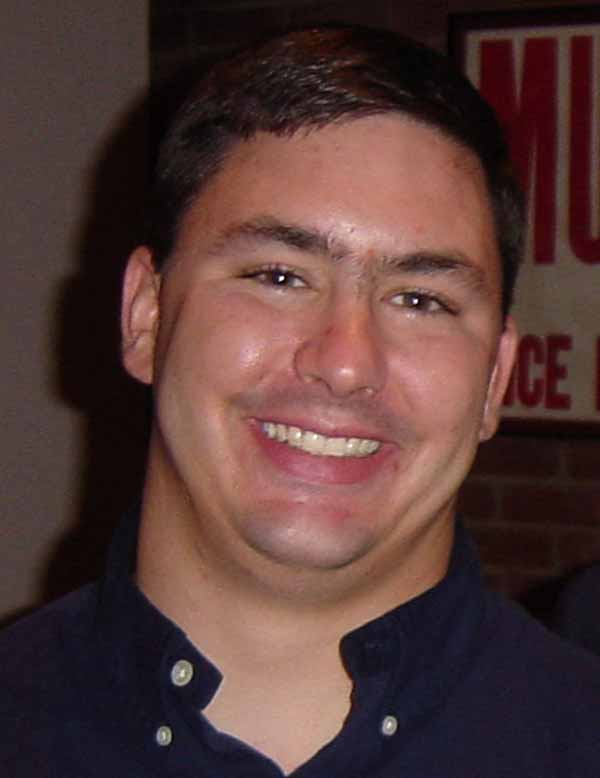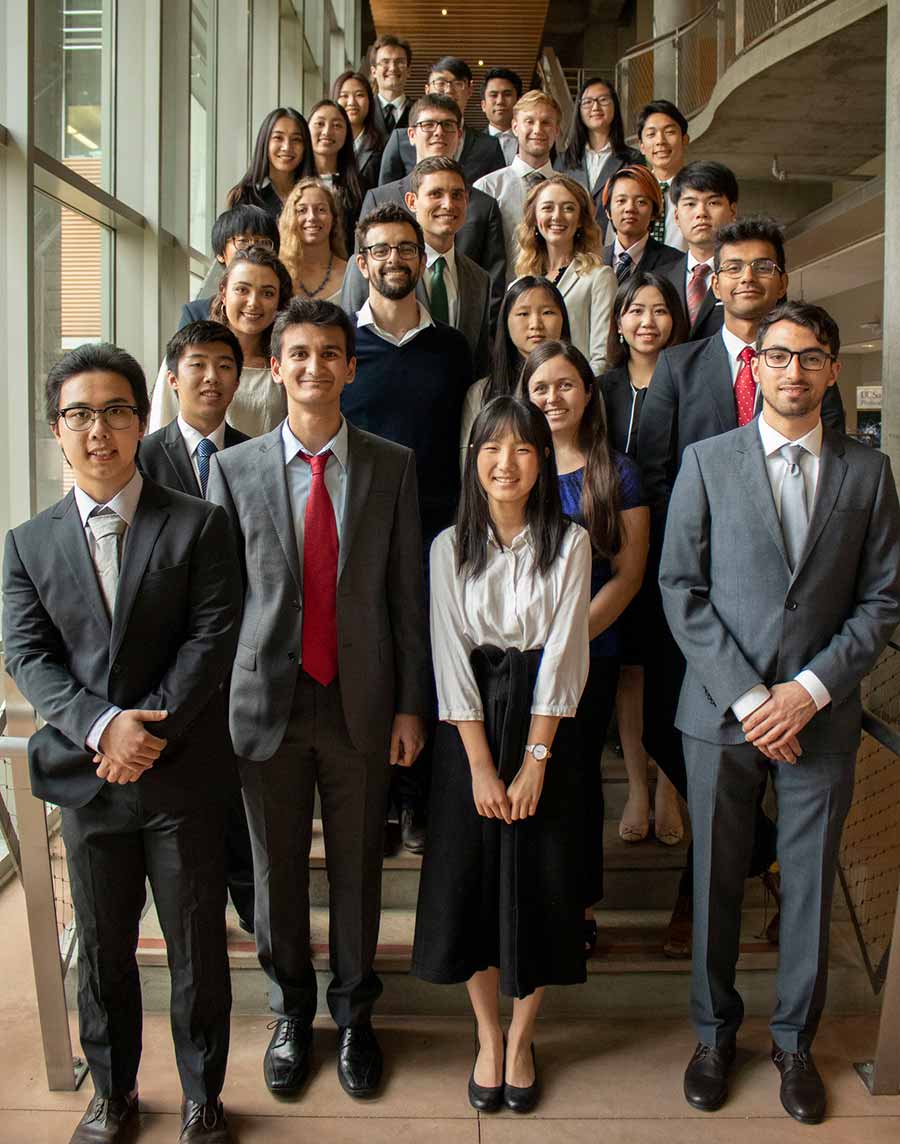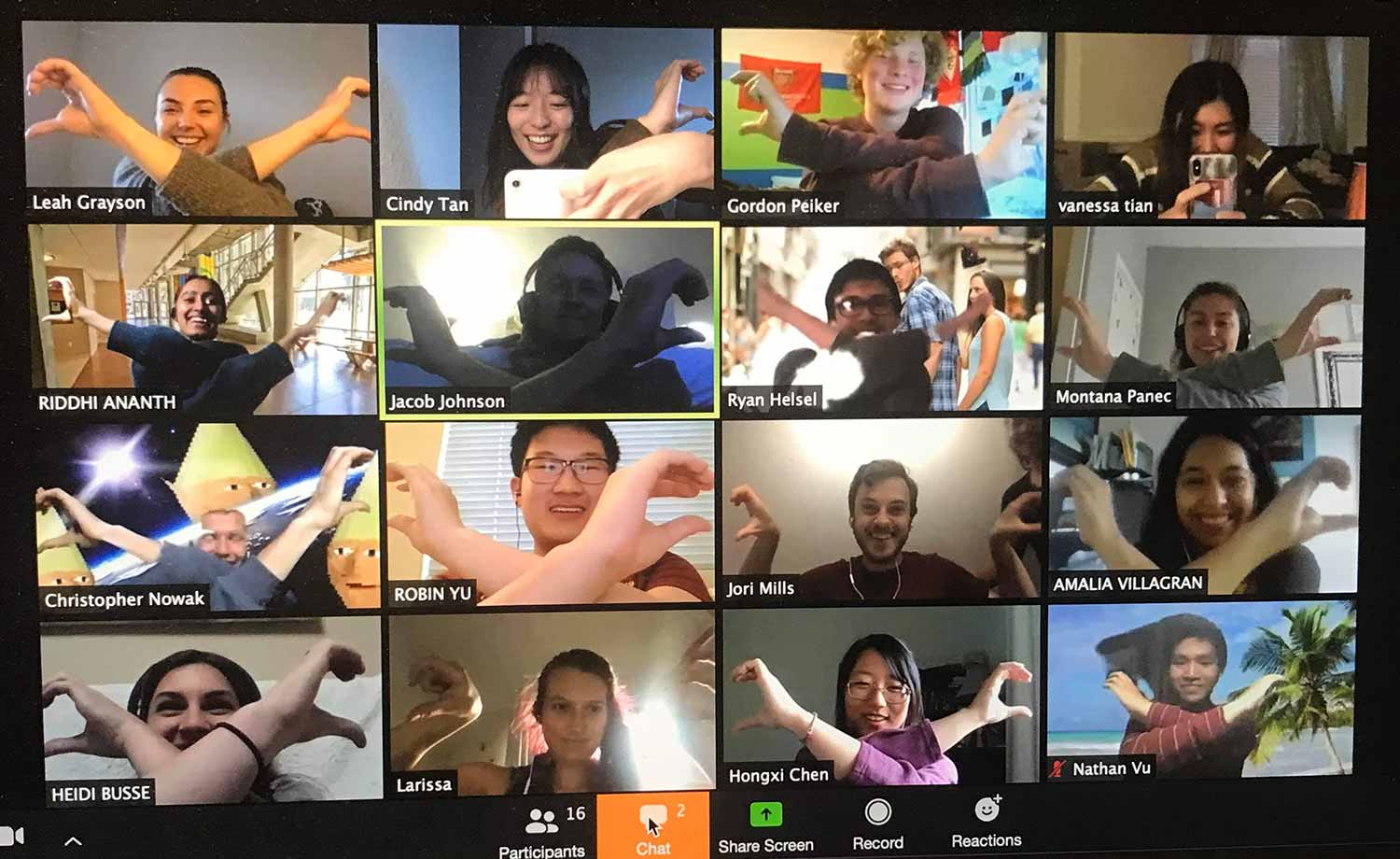
By:
- Cynthia Dillon
Published Date
By:
- Cynthia Dillon
Share This:
Chemist Helps Bridge Underrepresented Minority Gap in Science

Brian Leigh
The University of California San Diego paved PATHS to success for under-resourced and underrepresented minority (URM) students in STEM more than a year ago. Now, it has built a bridge, thanks to support from a National Science Foundation grant administered through the American Chemical Society.
“It is official—UC San Diego has been announced as a bridge site for underrepresented minorities,” said Brian Leigh, an assistant professor in the Department of Chemistry and Biochemistry, who recently received the American Chemistry Society Bridge Program (ACS-BP) Award after a formal selection process. “This award provides some funding in addition to the support we received from the Graduate Division, the Division of Physical Sciences and the Department of Chemistry and Biochemistry.”

Recipients of the Division of Physical Sciences 2019 Dean’s Undergraduate Awards. Photo credit: Michelle Fredricks, UC San Diego
UC San Diego is one of six ACS Bridge Sites in the nation. The ACS-BP’s mission is to strengthen the chemical sciences in the United States by increasing the number of underrepresented minority students who receive doctoral degrees in chemical sciences. These include African Americans, Hispanic Americans and Native Americans. As part of a national effort—the Inclusive Graduate Education Network (IGEN), established in 2018—ACS-BP has been working to create sustainable transition (bridge) programs and a national network of doctoral granting institutions that provide substantial mentoring for these students to successfully complete Ph.D. programs.
“It is fantastic that we have been named an ACS Bridge Site, and I’m thrilled for my colleagues who are leading this effort,” said Stacey Brydges, the inaugural Vice Chair of Equity, Diversity, Inclusion and Climate (VC-EDIC) in the chemistry and biochemistry department. “It will advance our longstanding commitment to inclusive graduate education, exemplified through various current and past training grants, including the U.S. Department of Education’s GAANN (Graduate Assistance in Areas of National Needs) Fellowship Program.
At UC San Diego, the bridge program will run for three recruitment cycles and provide funding for 12 graduate students, according to Leigh. Two students are expected in the fall this year, and one is on deferral during the COVID-19 pandemic, he said.
President for the UC San Diego ACS Student Affiliates (ACS-SA) Vanessa Tian said she believes that this program could increase the diversity and encourage different perspectives in the department. “I'm really happy to see that our chemistry and biochemistry are participating in ACS Bridge now,” she said.
Leigh said that he has two goals for the program: “The first is to have a perfect success rate, where the bridge program functions as designed and propels new scientists into the field to serve as role models for the next generation,” he noted. “The second is coupled to the first, and that is to find more funding opportunities to keep the program running and serving our community, state and country far into the future. Change requires constant attention and work.”
Chemical & Engineering News reported on a 2017 survey which showed under 5 percent of chemistry faculty nationwide are from URM groups. UC San Diego demonstrates its commitment to more balanced representation in the sciences and across campus with a robust Office for Equity, Diversity and Inclusion led by Vice Chancellor Becky Petitt. The Division of Physical Sciences also includes an active EDI office led by Associate Dean Alison Coil. Chair and Distinguished Professor of Chemistry and Biochemistry Vicki Grassian, who served as executive associate dean for the division and worked closely with Dean Steven Boggs on making EDI and student climate divisional priorities, established the new VC-EDIC role as the new chair of the department.

Members of the UC San Diego ACS Student Affiliates (ACS-SA) hold their first Zoom Officers Information Night during spring quarter and the pandemic. Photo courtesy of the ACS-SA website.
“UC San Diego is committed to better serving the URM community,” Leigh said, adding that currently this community makes up 30 percent of the U.S. population. “By helping support this program, we continue to demonstrate our commitment to this goal, and I am committed to increasing diversity and closing this gap between what we see in academia and our population.”
Part of Leigh’s approach to building bridges for students is how he teaches, which he says differs with each topic and each audience of students.
“I feel there is no single best way to teach and that no teacher is the ‘best’ teacher for everyone. I will say the single uniform thing that transcends all of my approaches (which includes his Stars Wars-like video) is spending time with students, either in person or virtually,” he said. “Lecture is often not enough. Investing time in students, diversity or anything, is really the driving factor for both excellence and change.”
Leigh said he hopes that he is setting a good example, and that students leave his class and go on to do the same.
“If you believe in it, do something. I look forward to working with more students; they make the work fun.”
The ACS Bridge project incorporates practices from programs that have strong evidence of success in supporting URM students. For example, The ACS-BP is modeled after the successful American Physical Society (APS) Bridge Program. The ACS-BP will also establish links between minority-serving and doctoral-granting institutions through research activities, collaboration and personal contacts. According to the ACS, since many of today’s doctoral students will become tomorrow’s academic, industrial and government leaders, educating more URM Ph.D.s will have a compounding effect in educating and inspiring students at all stages in the system and will help address persistent disparities.
Share This:
You May Also Like
Stay in the Know
Keep up with all the latest from UC San Diego. Subscribe to the newsletter today.


